AC Milan disappointedly drew 2-2 against side Salernitana, who remain at the bottom of the Serie A standings. The visitors had led the game but needed a 90th-minute equaliser to rescue a point, with several tactical aspects going wrong.
Milan made an encouraging start to the game, with their off-ball energy, aggression and coordination forcing a number of early turnovers. The home side proved they could pose a goal threat, with two attempts in the 6th minute, but this was more an exception to the rule in the opening fifteen minutes.
The away side’s out-of-possession approach suffocated the opposition, affording them more opportunities to be on the ball and therefore attack. Milan’s pressure culminated in going a goal ahead in the 17th minute when Fikayo Tomori reacted quickest to head in following a deep freekick in the Salernitana half.
For the next fifteen-minute period, Milan controlled the game through possession, having 75% of the ball. Although, it was the hosts who were testing the opposition goal more frequently and in the 42nd minute, Salernitana’s pluckiness paid off. Federico Fazio rose highest from a corner kick to level the score.
The second half started in much the same vein as the first. Milan had the majority of possession and territory but with limited quality, and therefore threat, in the final third. Salernitana were feeding off opportunities to counter and just past the hour-mark, the hosts took advantage of a Tomori injury and Mike Maignan howler to go into a shock lead.
The Milan fightback did not come immediately, however. It took the Rossoneri twenty minutes to generate a shot on goal after going behind. But in the 82nd minute, two chances came in quick succession. Salernitana goalkeeper, Benoît Costil, first parried substitute Luka Jović’s header and then smothered his close-range stretched shot on the rebound when a goal looked certain.
The Serbian striker made amends for his miss though in the 90th minute when he volleyed in Giroud’s knockdown to make it 2-2 and at least save face for himself, his team, and potentially his manager, for now at least.
Another disappointing result and equally under-par performance. Much of the outcome can be owed to individual errors, Milan’s lack of cutting edge in the final third (18 shots on goal, their highest in Serie A this season) and inability to prevent the opposition from generating shots on goal (conceded 17 shots). All of this is despite Milan’s attempt to control the game (66% possession).
But whilst these factors were clear for everyone to see, here’s @Tactics_Tweets to provide some quick-fire observations from the game that might have been missed.
Leao’s set-piece role
Against Monza, Milan benefitted from a Leao cross from the far post in the second phase of a corner kick for Jan-Carlo Simic to score. And in this fixture against Salernitana, Milan looked to try and repeat this trick by giving the Portuguese attacker a specific role at set-pieces.
In the 3rd minute, Milan had their first corner kick of the game. Leão was positioned towards the far post as the away side attempted a rehearsed routine. After playing it short, they swung the ball towards the far post where Leão had pulled away to head back across goal but to no avail on this occasion.
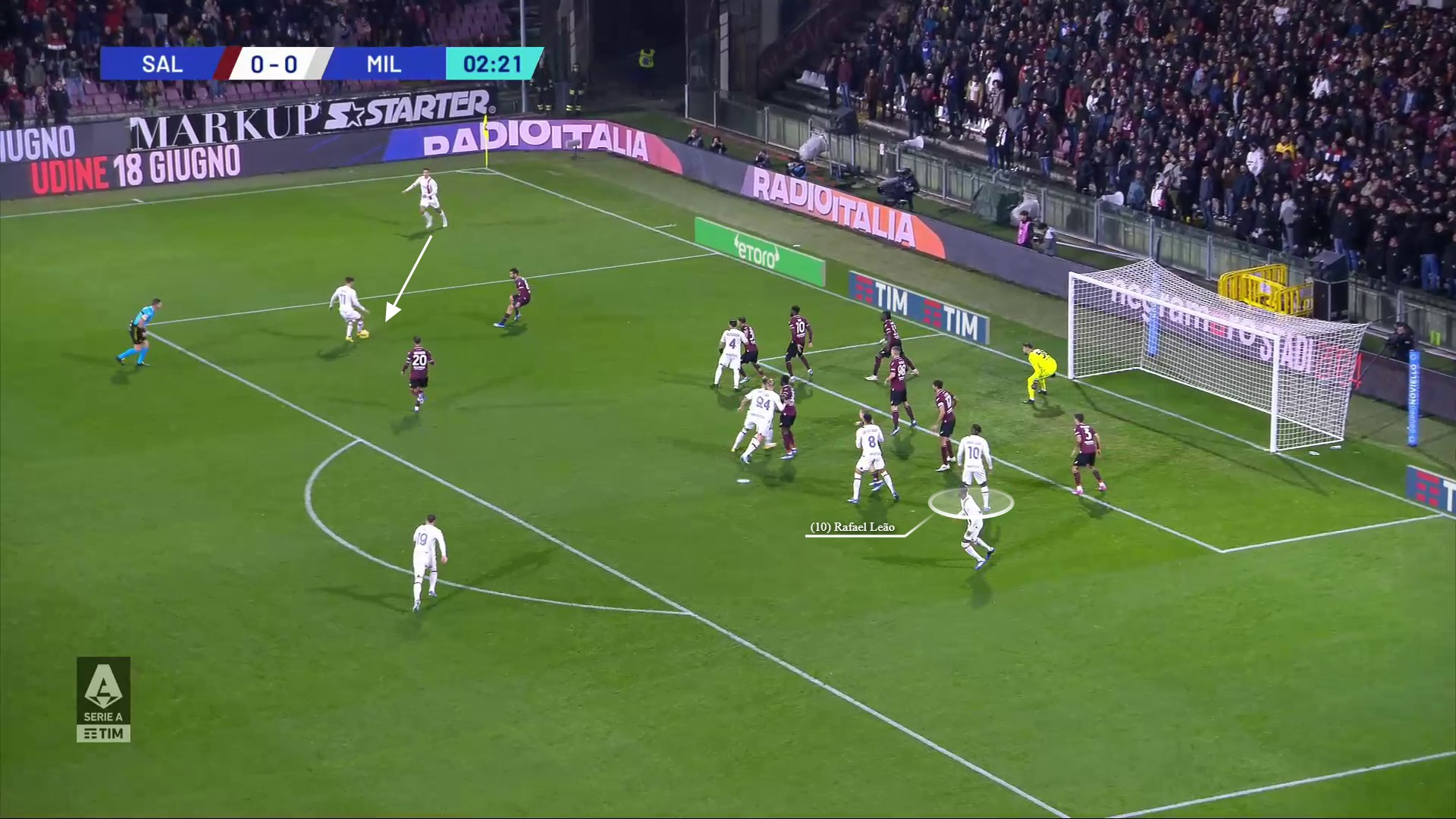
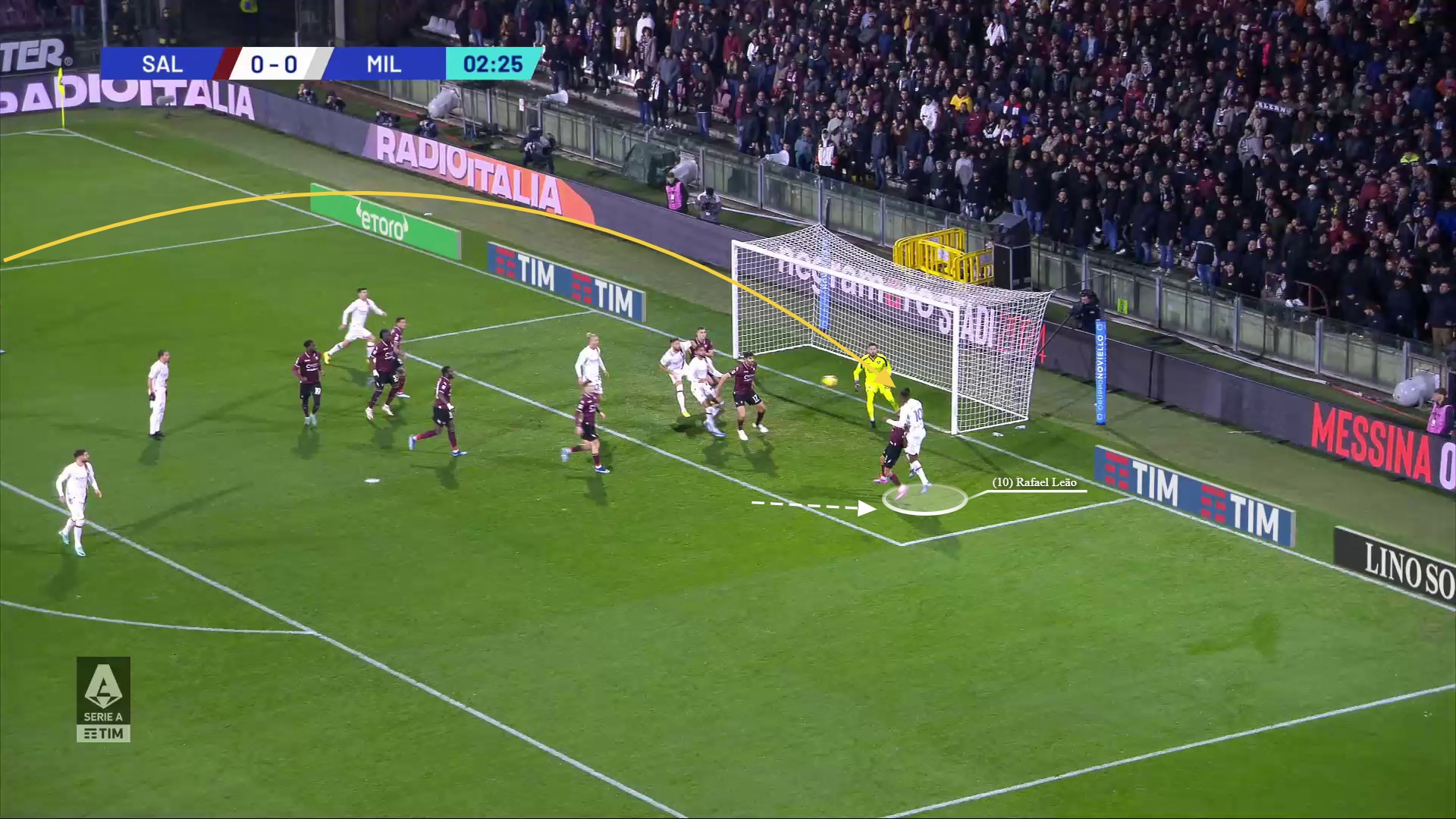
This specific role for Leão was not only limited to corner kicks, it also applied to freekicks. The first of which came in the 8th minute. Below you can see Leão was initially on the same side as the takers. But after a short freekick was taken, Bennacer carried forward to change the angle of the cross where Leão was now positioned at the far post, but was not involved in this instance.


Here’s another example of a corner kick from the 10th minute.

And in the 17th minute, Milan continued this ploy and got their reward. A freekick deep in the opposition half was crossed into the box with Leão lurking towards the far post. The first contact from the freekick diverted it towards this area…
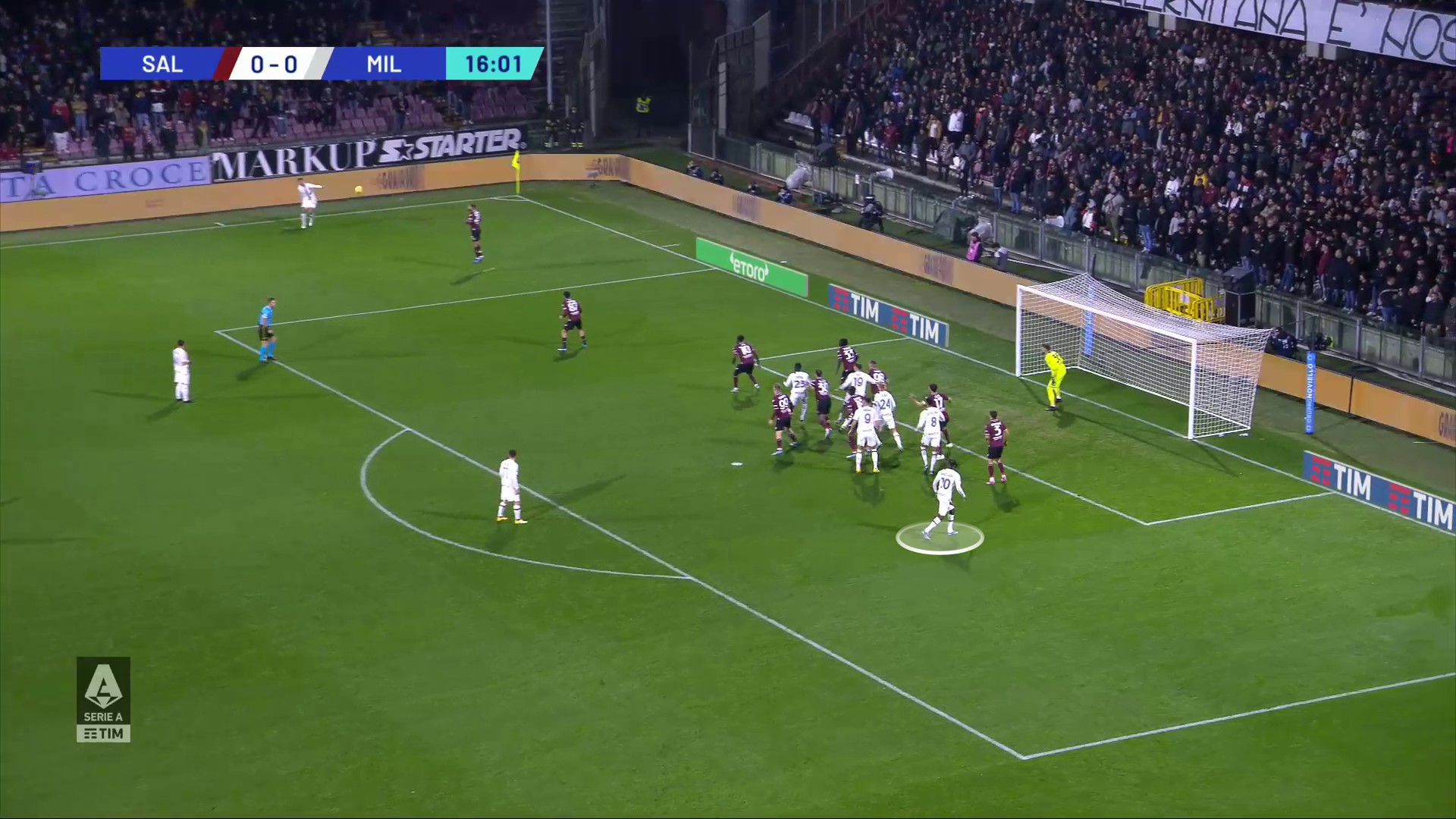
…where Leão was in a prime position to direct the ball back across the face of goal which ended up with Tomori heading in from close range.
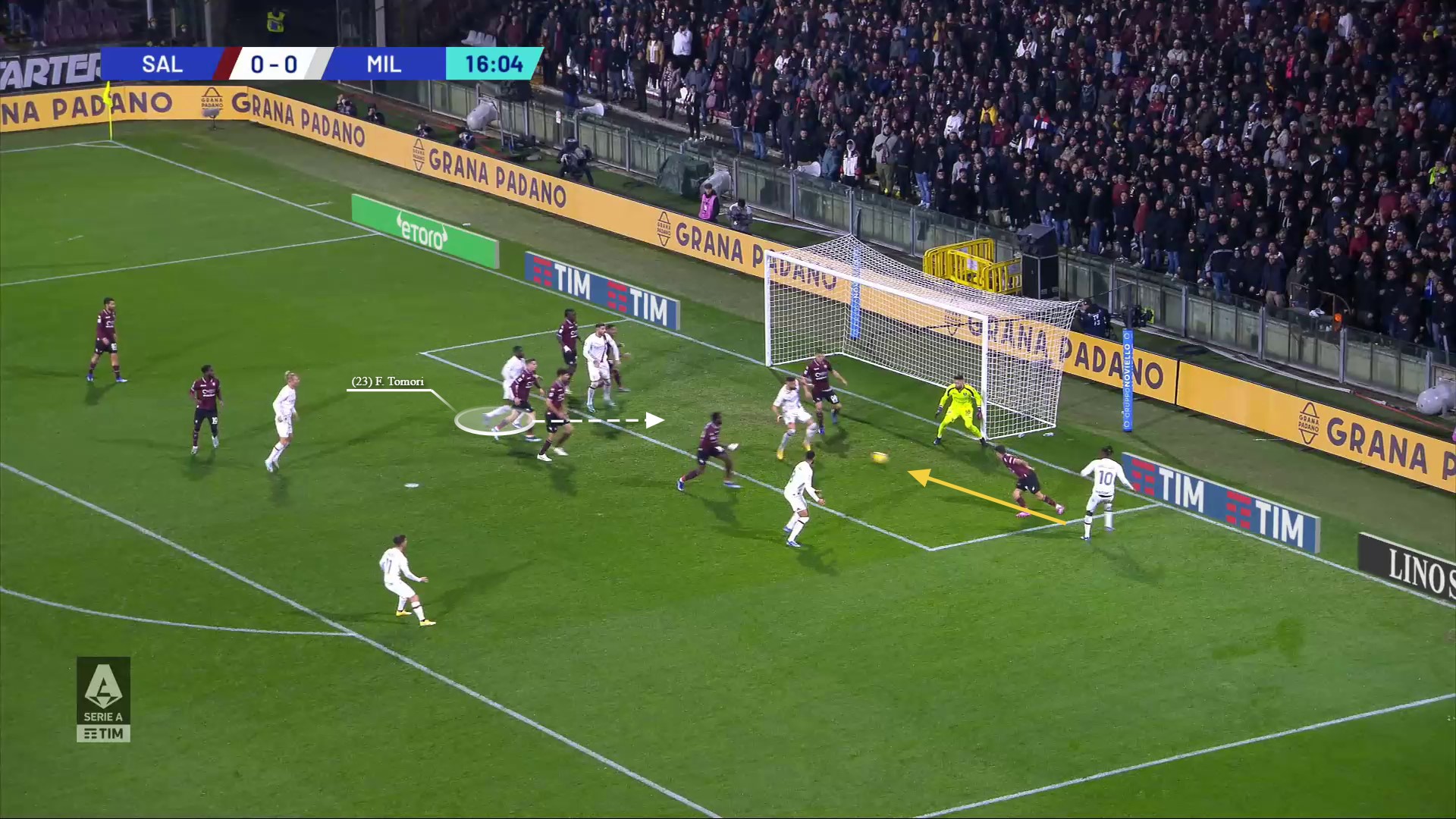
Milan continued this set-piece tactic throughout the game. Here’s another free kick in the 45th minute. This was again taken short and from the second phase, Milan put a cross back towards the far post that Leão attacked but failed to get on the end of.
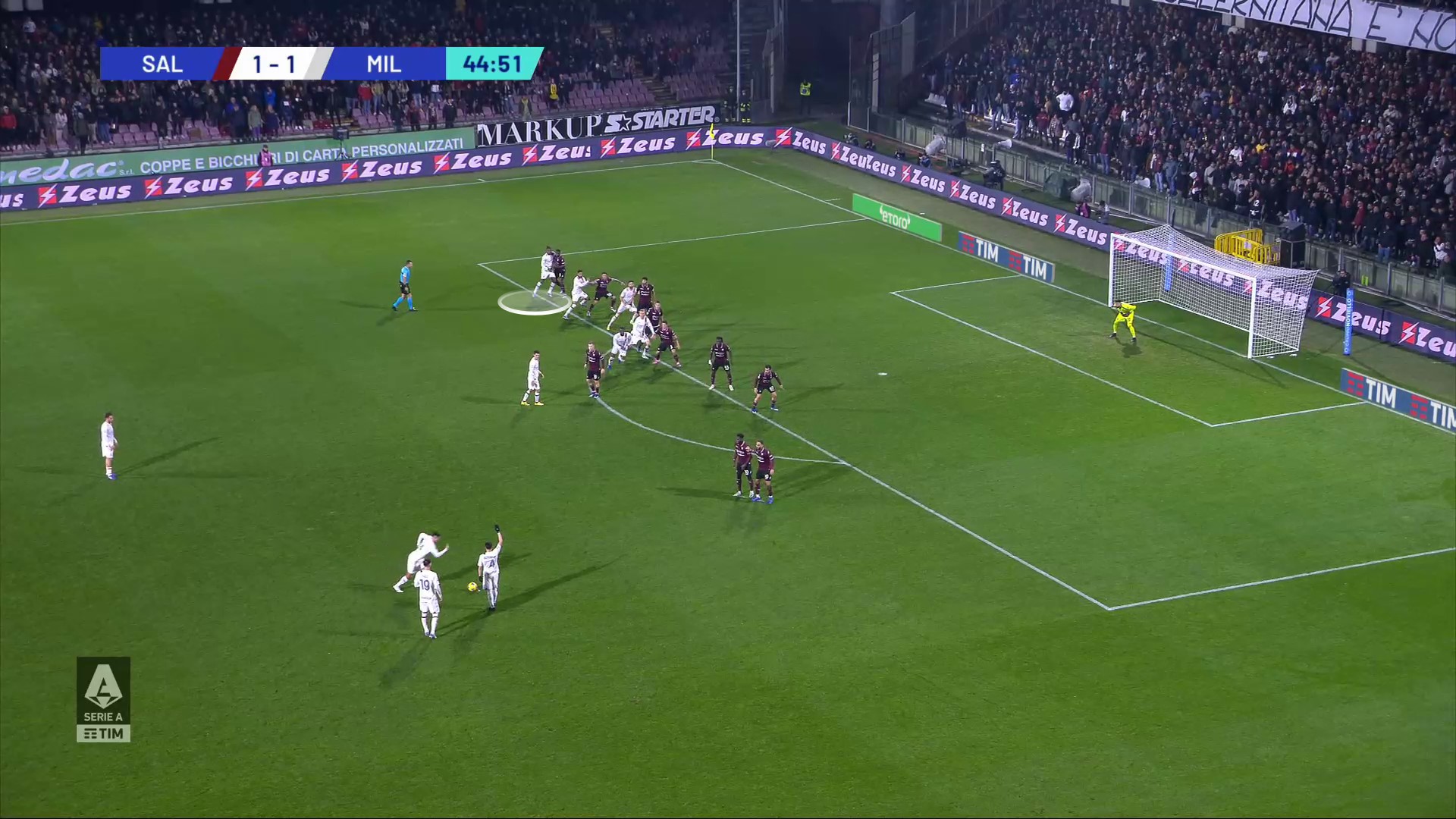

And here’s one example from the second half which Milan nearly benefited from again. Leão pulled beyond the far post after the first contact directed the ball into this zone and he then laid the ball back into the six-yard box but no teammate was in place to shoot.
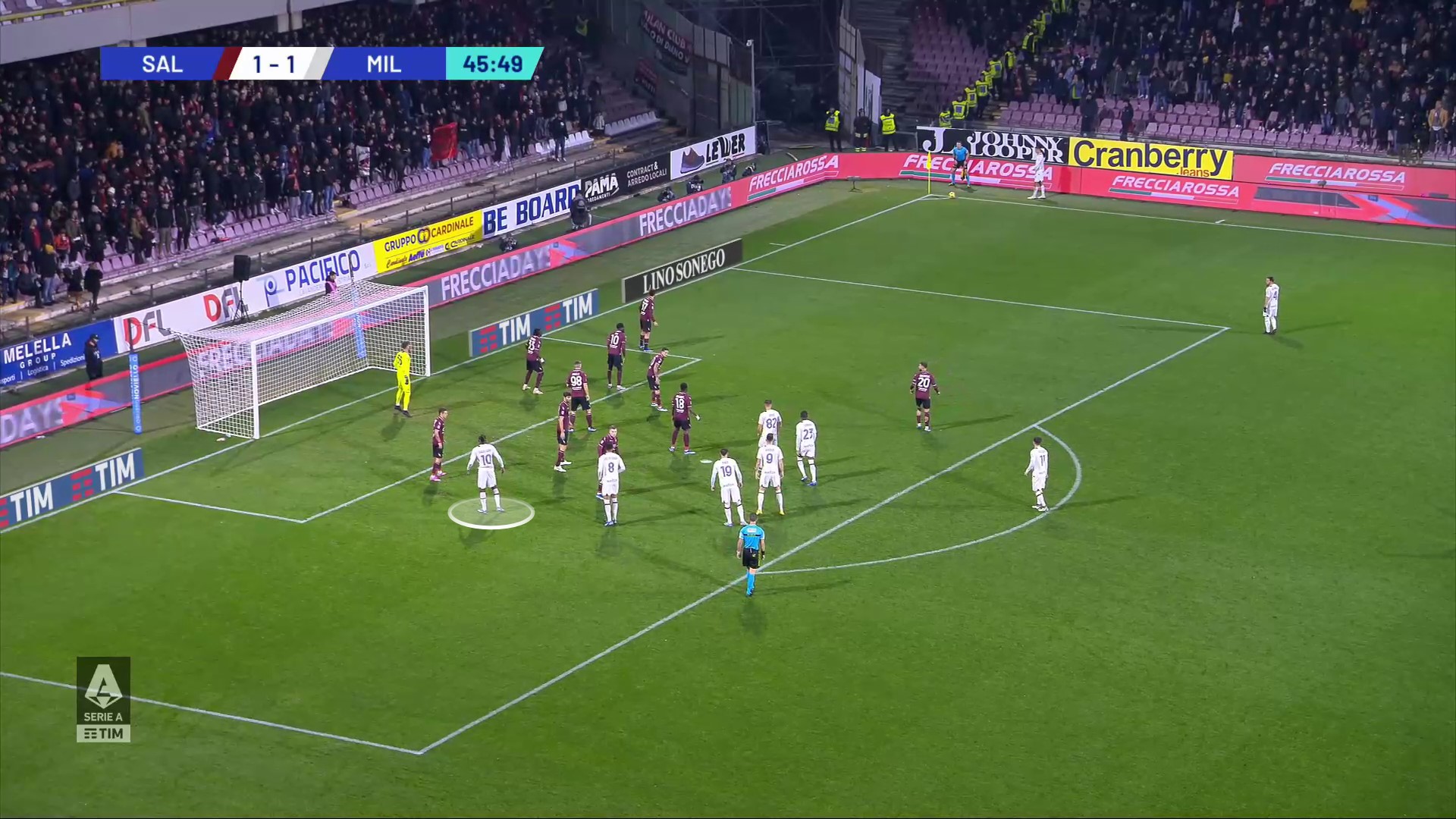
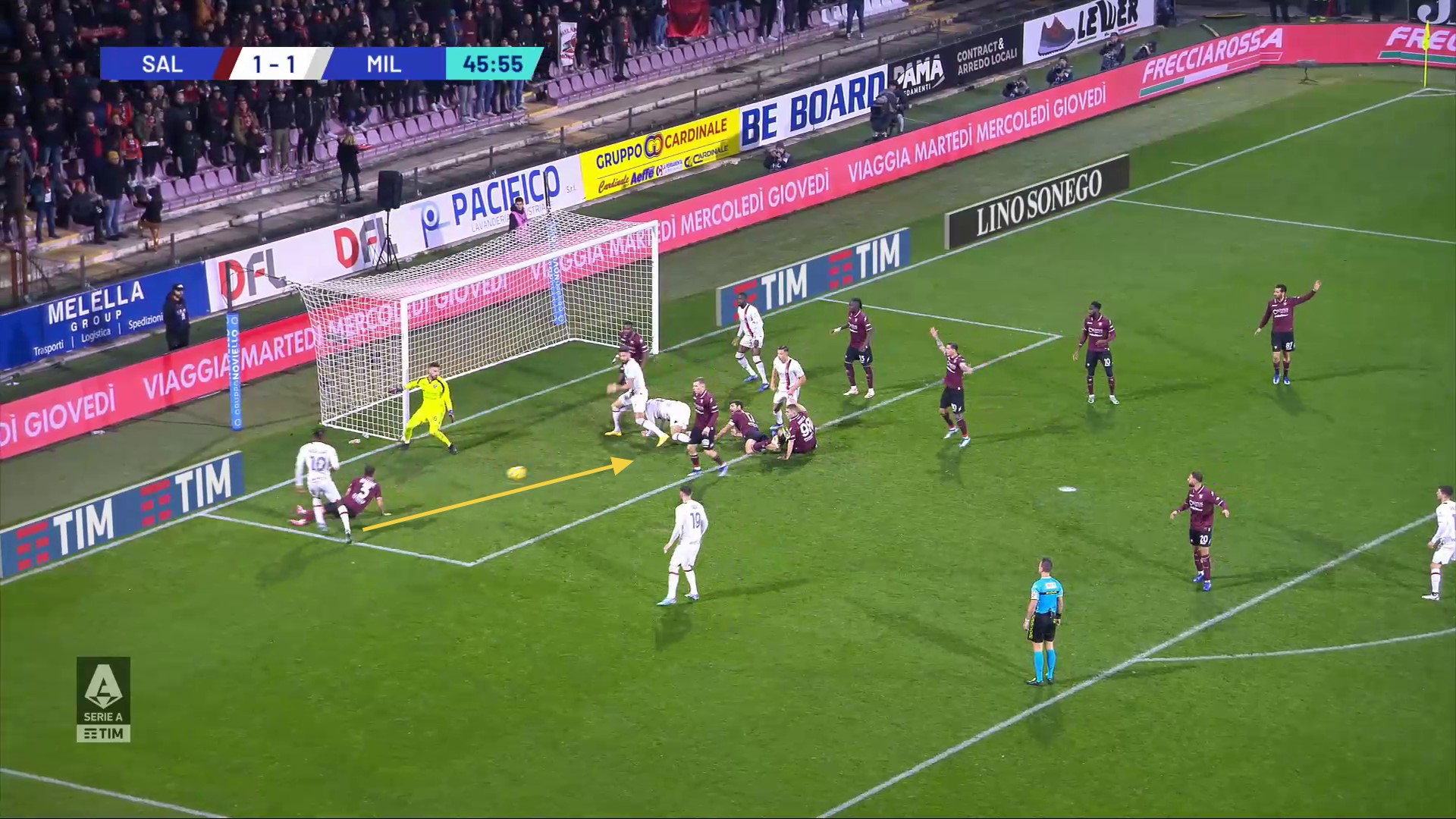
Momentary mistakes
Salernitana’s second goal does not require any in-depth analysis. However, the origin of their first does showcase the fine margins in football. But before looking at Federico Fazio’s headed equaliser, we need to revisit the home team’s previous corner kicks.
Here’s Salernitana first where you can see Simon Kjaer had the responsibility of marking Fazio.
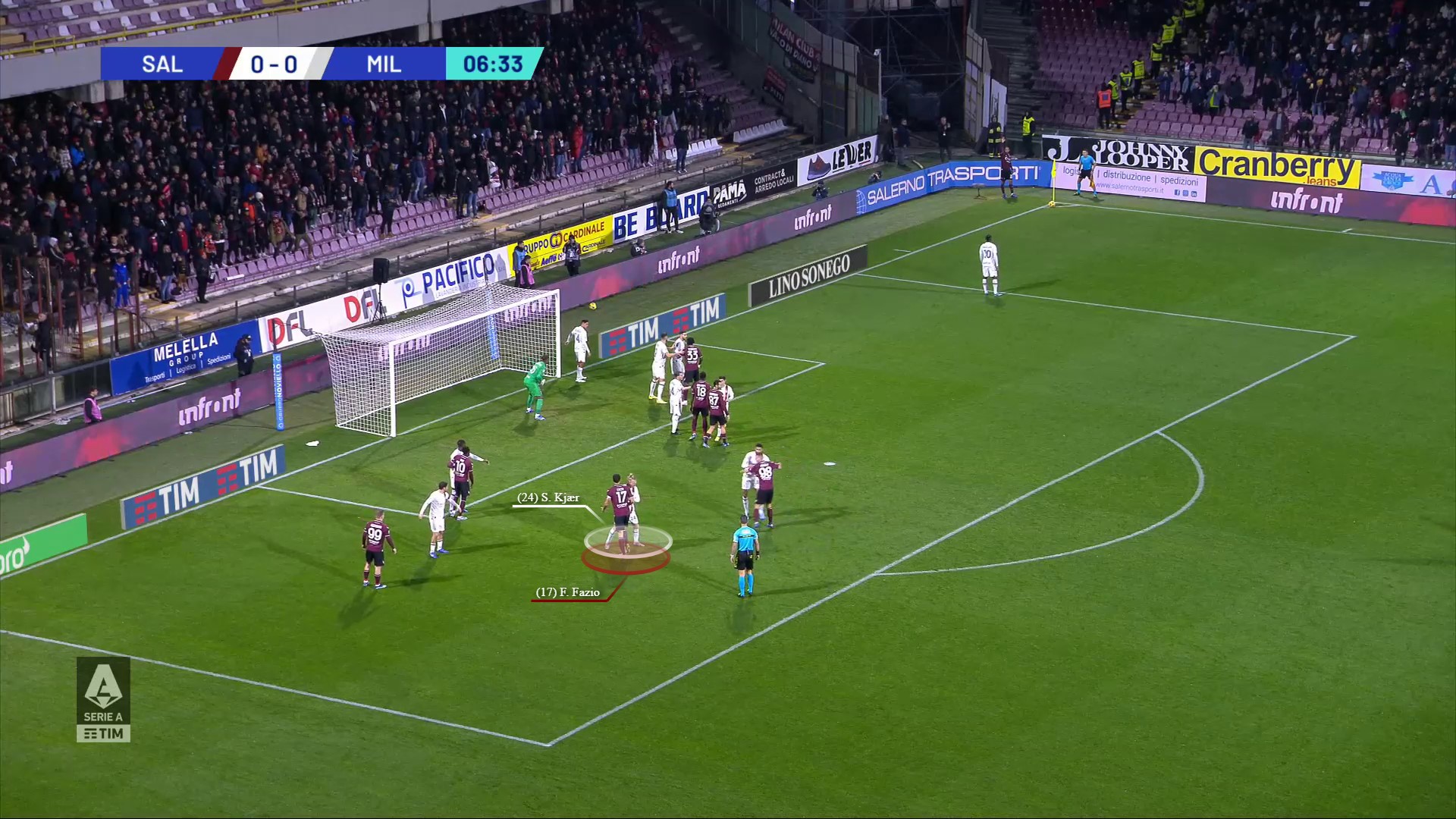
And this happened again on the second…

…and third takes.
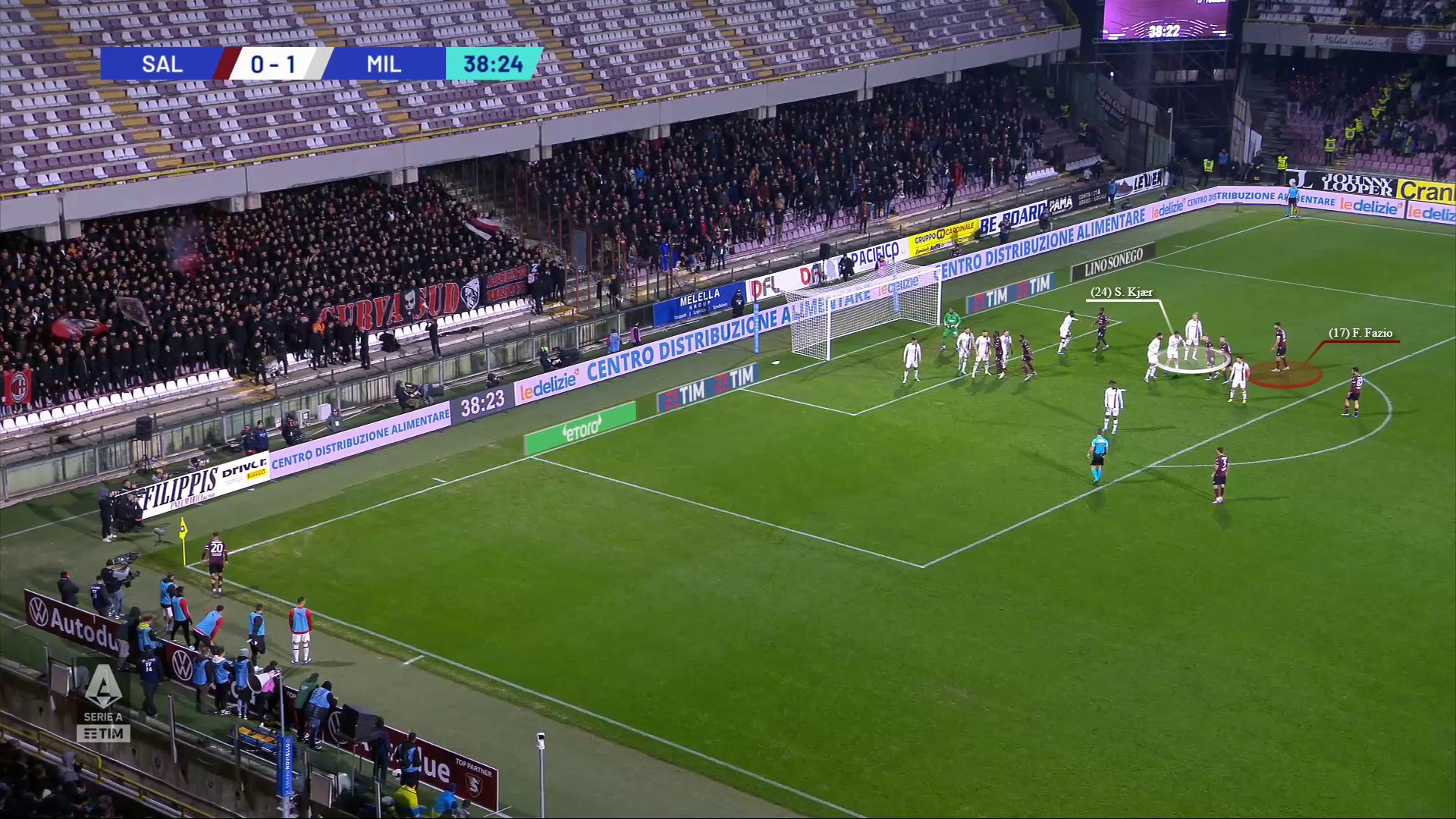
Gradually, Salernitana appeared to be trying to use blockers to dismark their main aerial threats at corner kicks and that’s exactly what happened on the fourth and decisive take.
Below you can see how Salernitana managed to create separation between Kjaer and Fazio by congregating their players in close proximity.
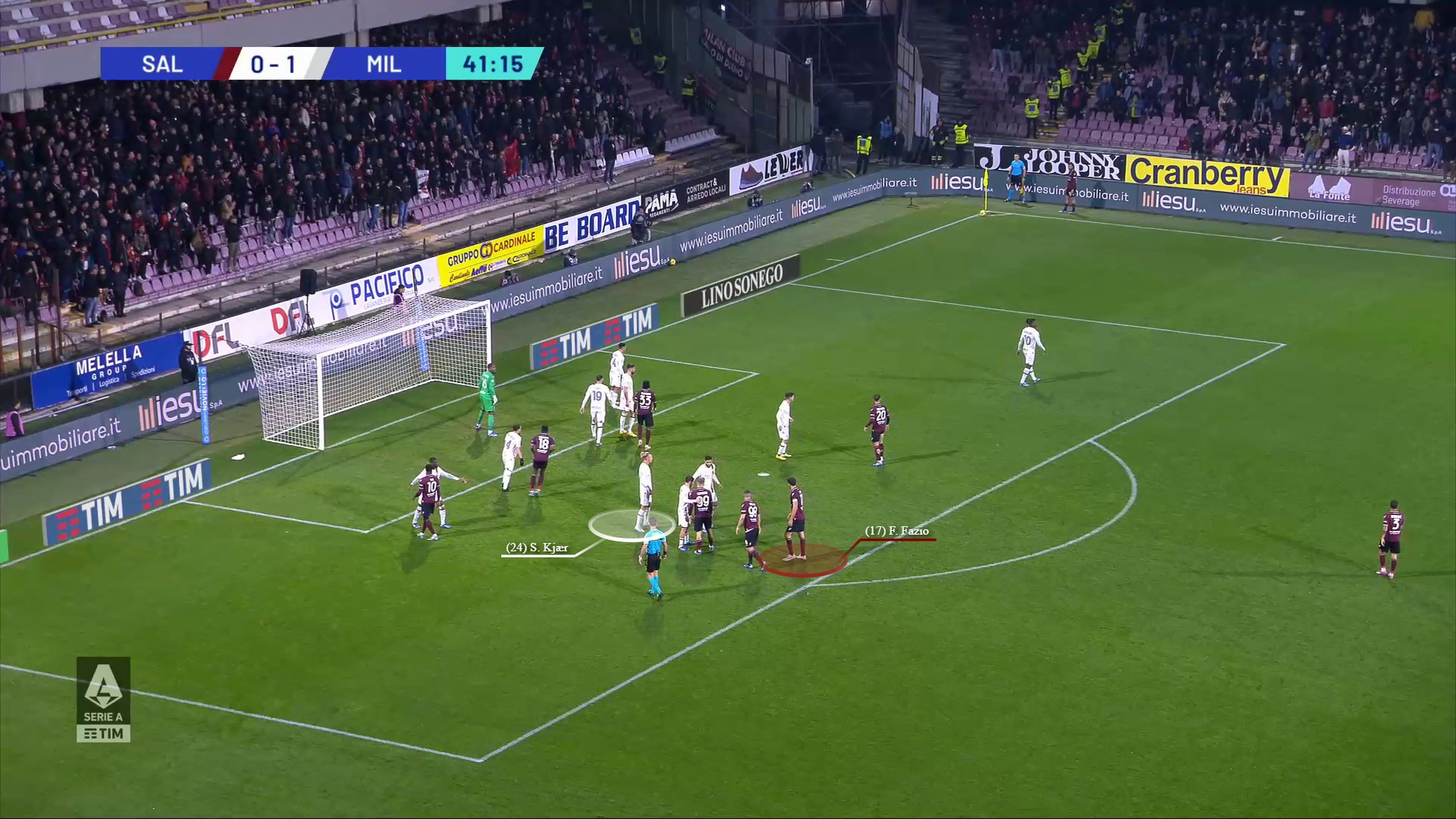
This grouping of players not only meant that Kjaer was no longer touch-tight to his opponent but neither was Loftus-Cheek.
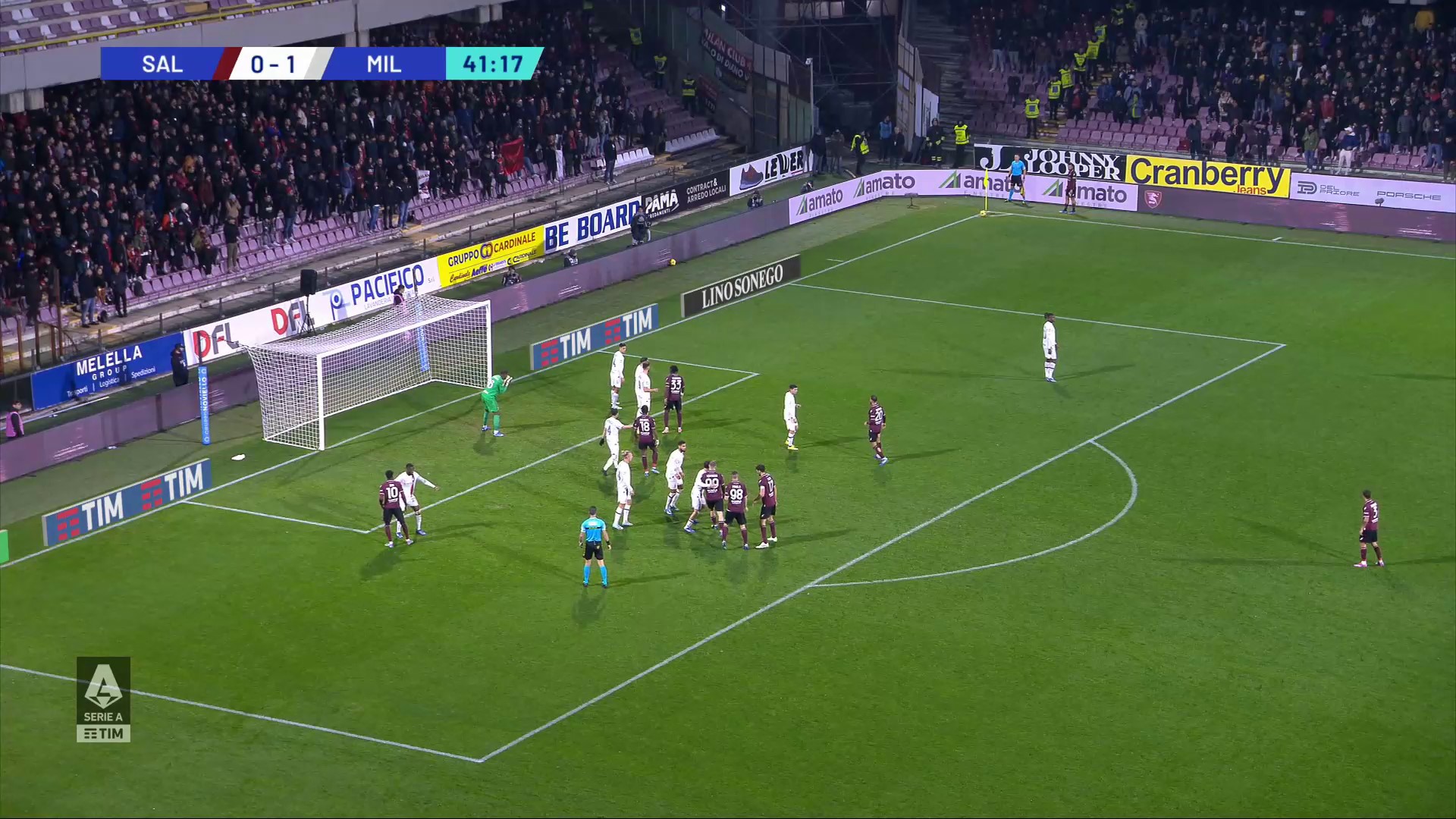
As a result, by the time the corner was taken, Fazio managed to get a clear run at the ball to attack the delivery.
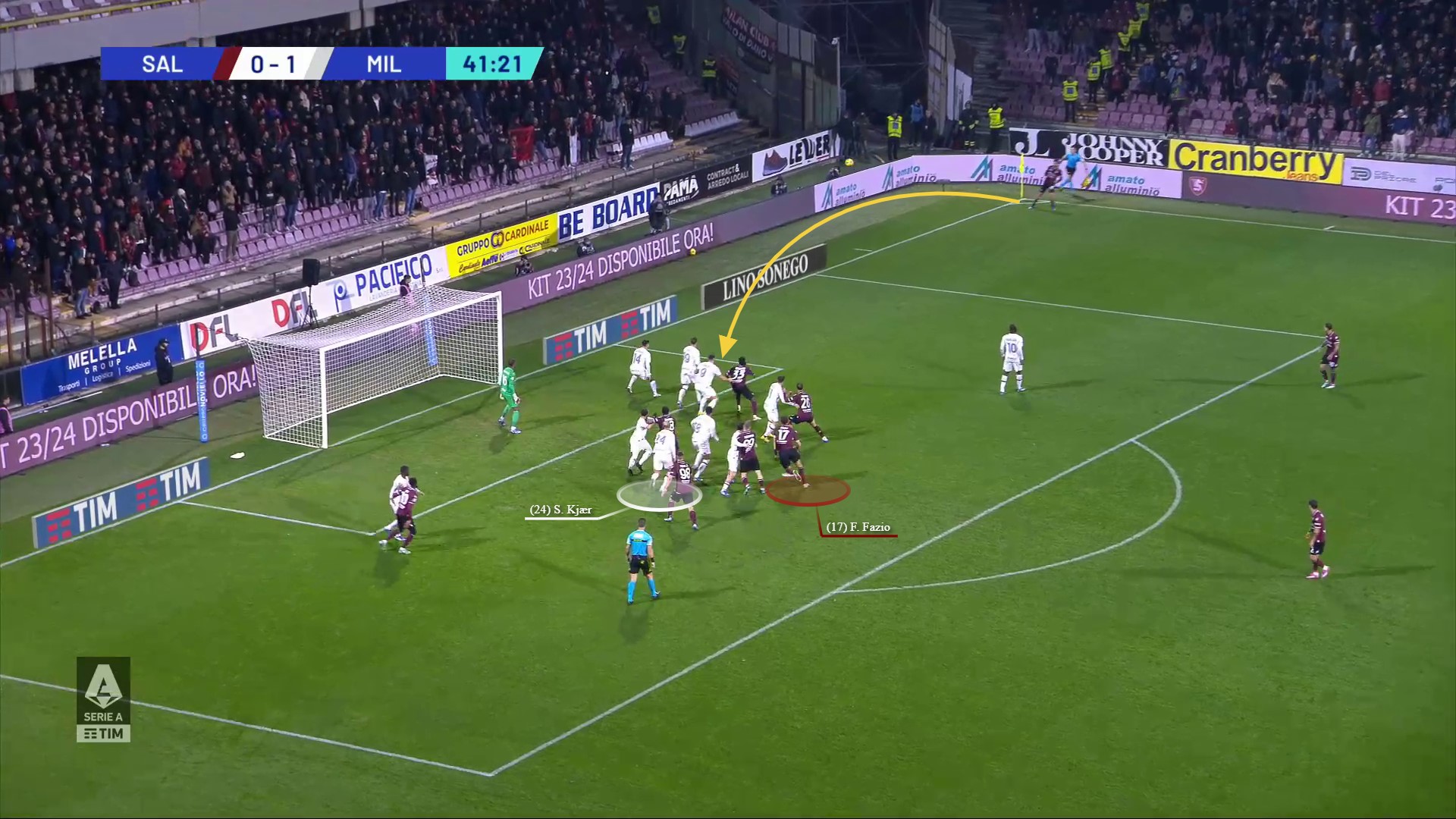
In the confusion, Loftus-Cheek decided to pick up Fazio but in the end, neither the English midfielder nor Kjaer managed to recover in time and the Salernitana defender successfully powered the ball into the back of the net.
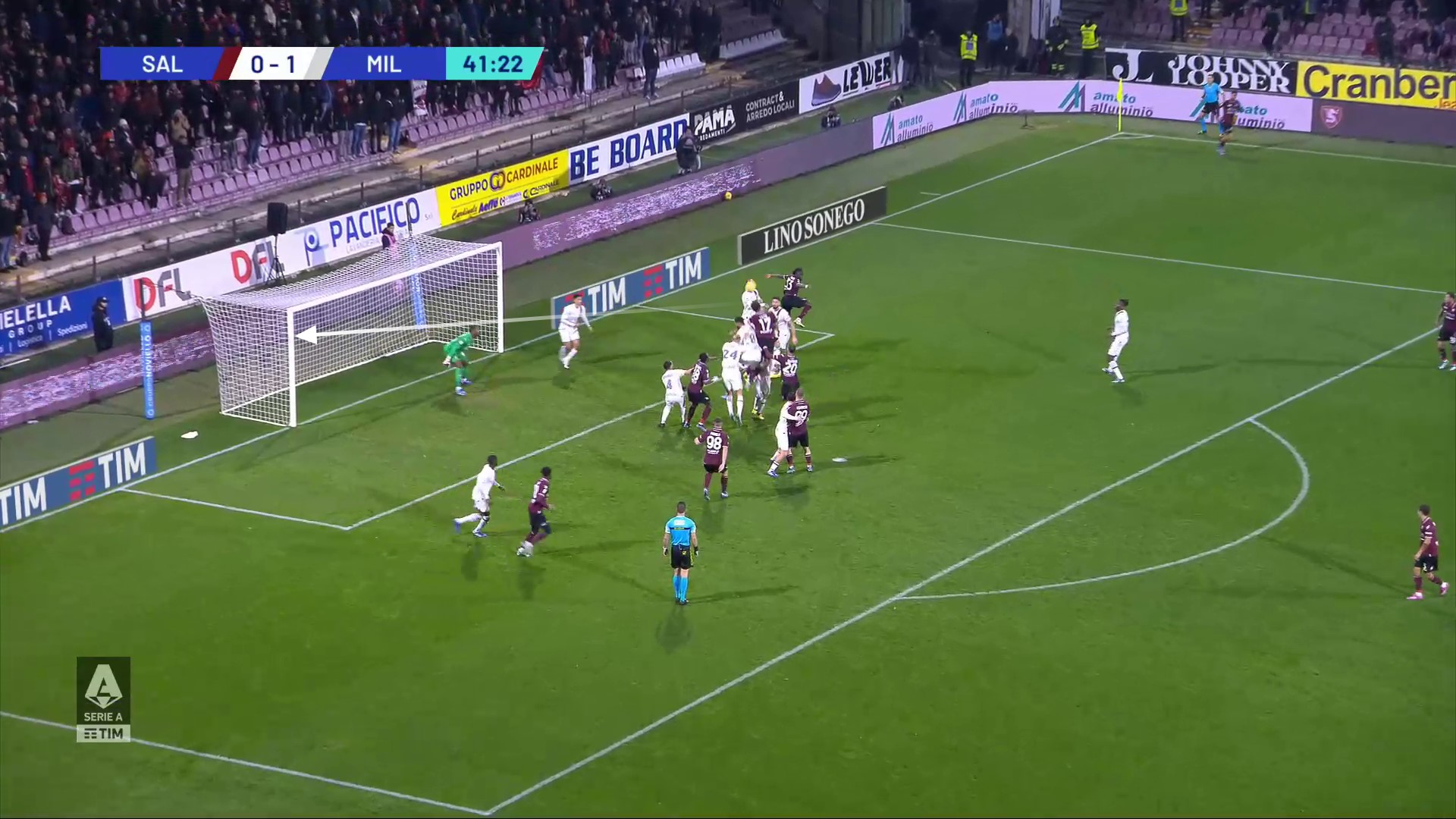
A momentary mistake from the Milan players at a set piece, which allowed an opponent to get a momentary head start to attack the ball and score.
Salernitana overload forward line
Salernitana varied their shape in different phases of play. When in possession, the home side typically used asymmetrical full-backs too. Left-back, Domagoj Bradarić advanced high to provide width on the left whilst right-back, Pasquale Mazzocchi, tended to stay closer to his two centre-backs to provide the team with a base of three but could also join attacks as play reached the final third.
Ahead of this base, Lassana Coulibaly was often the deepest midfielder with Mateusz Łęgowski more dynamic in his positioning between the boxes. In attacking areas, Boulaye Dia was supported by Grigoris Kastanos and Loum Tchaouna who pushed inside of the left. Providing width on the right was Antonio Candreva.
One of the benefits of this interchangeable attacking shape is that it allowed Salernitana to overload their forward line versus the Milan back four. The first example of this was in the 6th minute. Below, the passage of play started with the home team playing out from the back.
With Bradarić advanced, Lorenzo Pirola had space to receive from his goalkeeper as the left side of the base of three and carry forward, as Pulisic had been dragged deeper as a result of the opposition left-backs higher positioning. Coulibaly, the deepest midfielder, was being marked by Loftus-Cheek, following Milan’s usual man-marking approach in central midfield.

Pirola clipped a pass in behind the Milan backline and in the visual below you can now see Salernitana’s overloaded forward line, including Bennacer and Reijnders also man-marking. From this attacking sequence, Salernitana created their first two attempts on goal.
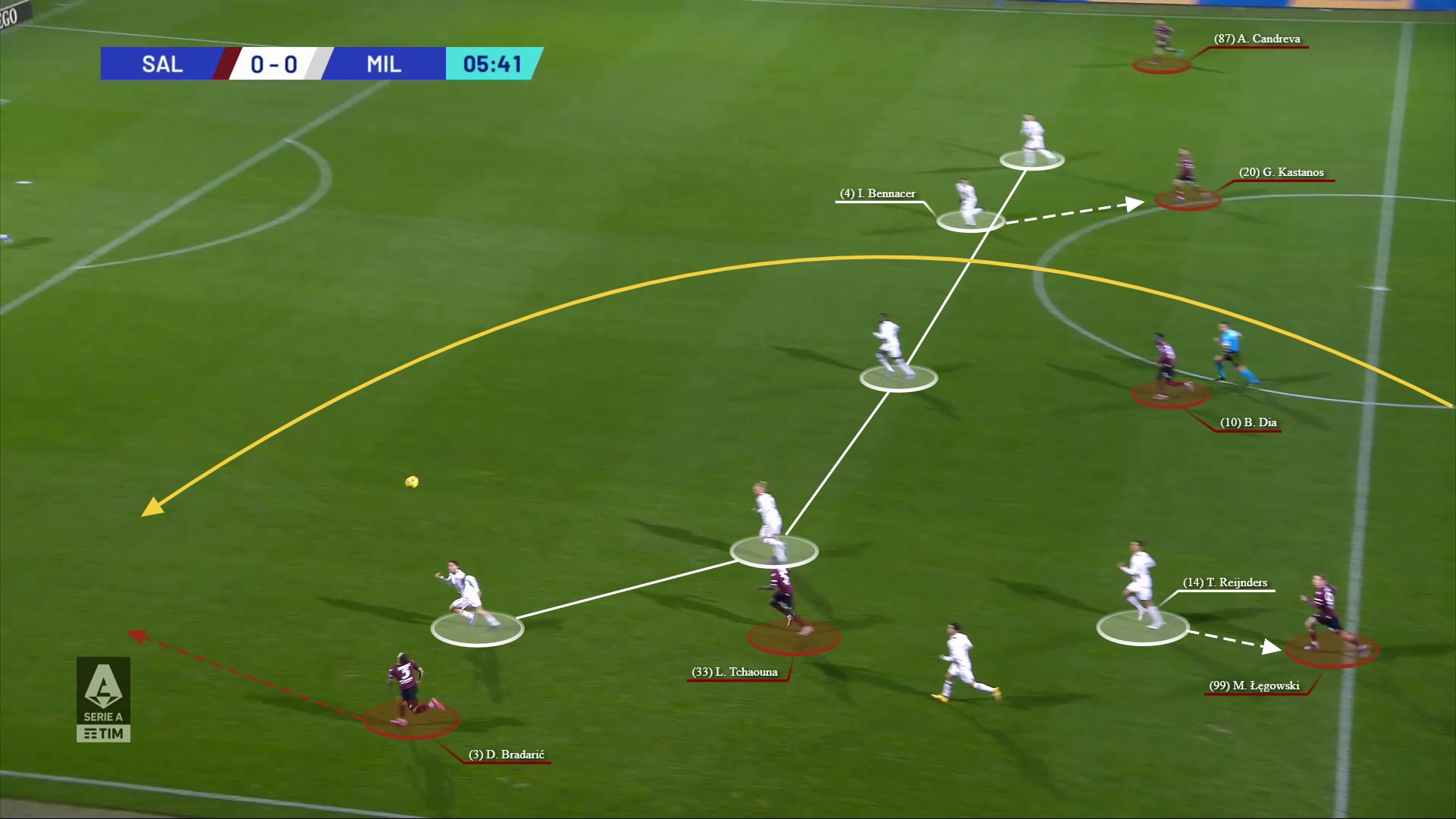
This overloaded forward line also played its part in the build-up to the corner kick that led to the hosts’ equaliser. In this attacking moment, Salernitana advanced the ball forward via their right-hand side.
As a result, Mazzocchi had a licence to get involved and this not only created an overload but also disrupted Milan’s marking scheme. Note below the positioning of Hernández, Reijnders and Bennacer.
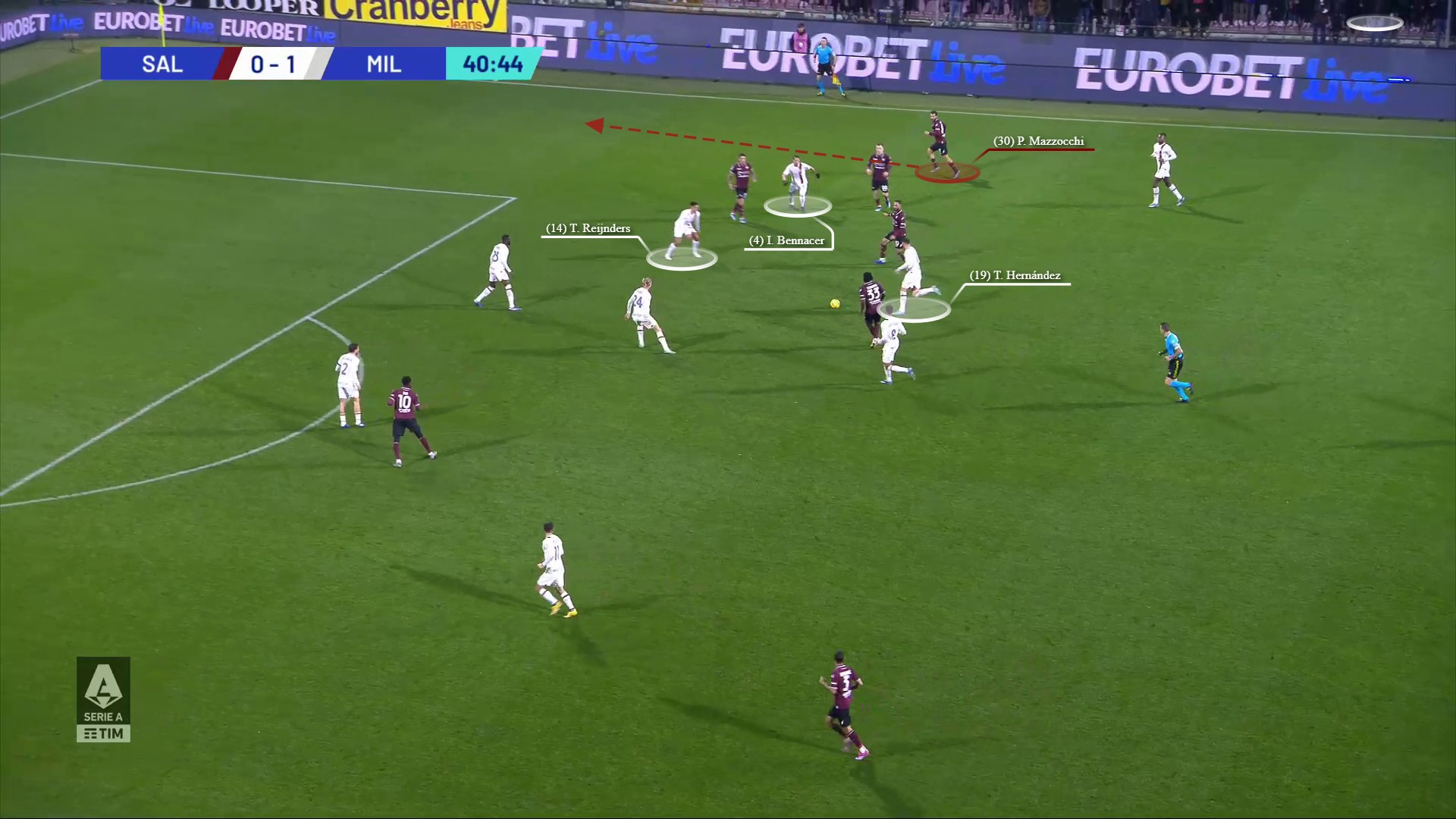
The outcome of this passage was a shot inside the box which Maignan pushed wide to concede the corner kick which Fazio scored from.
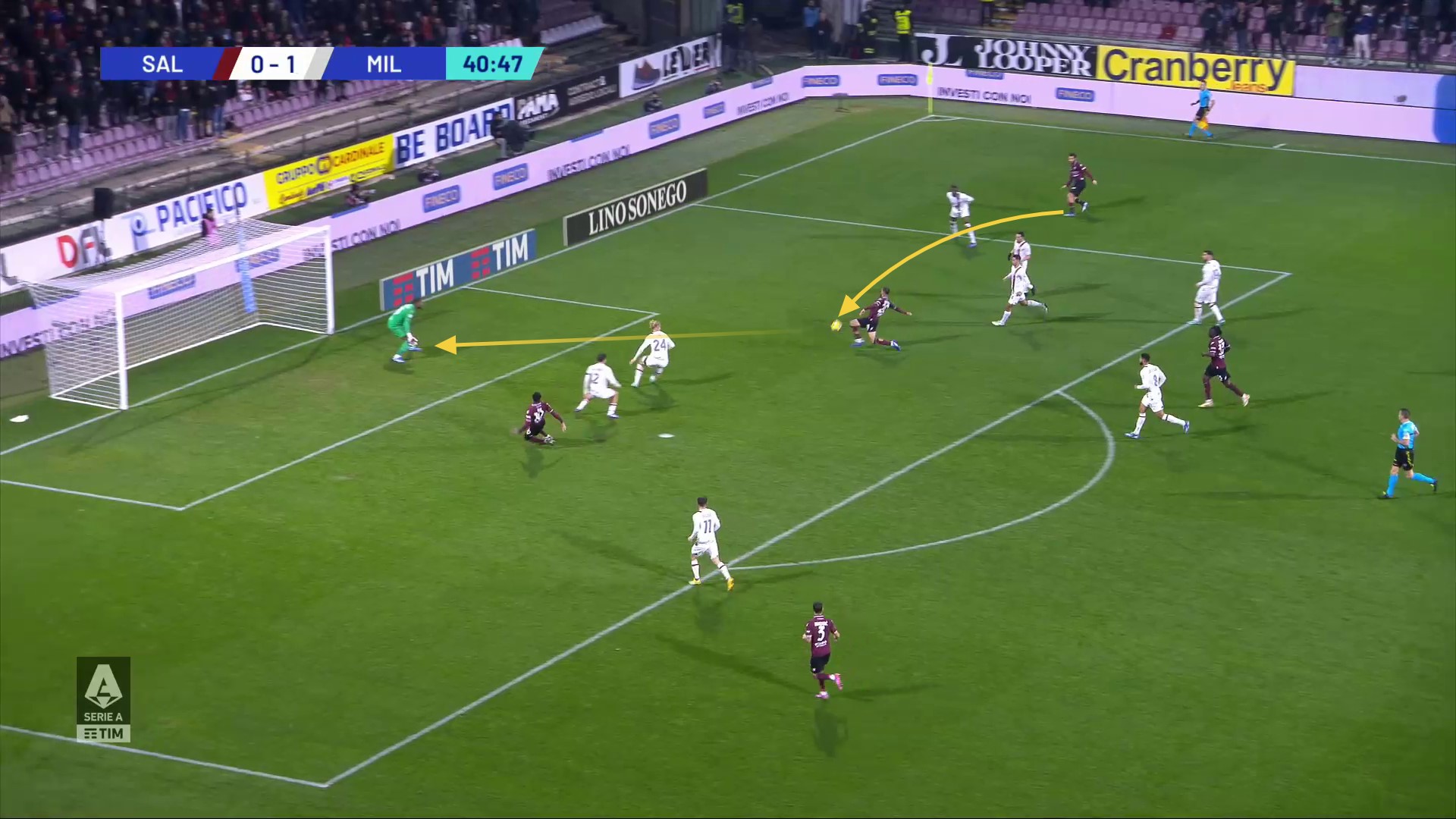
Milan’s defensive conundrum
In the defensive phases, Milan continued with their aggressive and proactive out-of-possession approach. This was illustrated by their 5.71 PPDA (Passes Per Defensive Action) – their second-lowest average figure of the season.
With Salernitana attempting to play out from the back, this allowed Milan to execute their player-orientated high-pressing scheme. According to @markrstats, Milan forced six high turnovers, three of which led to a shot showcasing this tactic has equal defensive and offensive intent.
However, despite this aspect of the visitors’ defensive game plan proving to be effective in moments, Milan continue to allow the opposition a high number of attempts. Against Salernitana, the opposition generated 17 shots on goal in total. And this unwanted metric of Total Shots Against is one Milan ranks highly for in Serie A this season.
Across all teams, Milan are 5th highest for shots against, both in total (229) and per 90 (12.13). In reality, Milan have conceded 20 goals (9th lowest) in the league but their xGA is 26.09 (11th lowest) suggesting an over-performance in this area – which variance could eventually balance out and some may argue did, in the case of Maignan’s error.
Conclusion
This draw with Salernitana felt fairly representative of Milan’s season so far. Performed well in spells but had issues in both boxes. Up next, Sassuolo at home where the home crowd will demand not only a win but a performance.


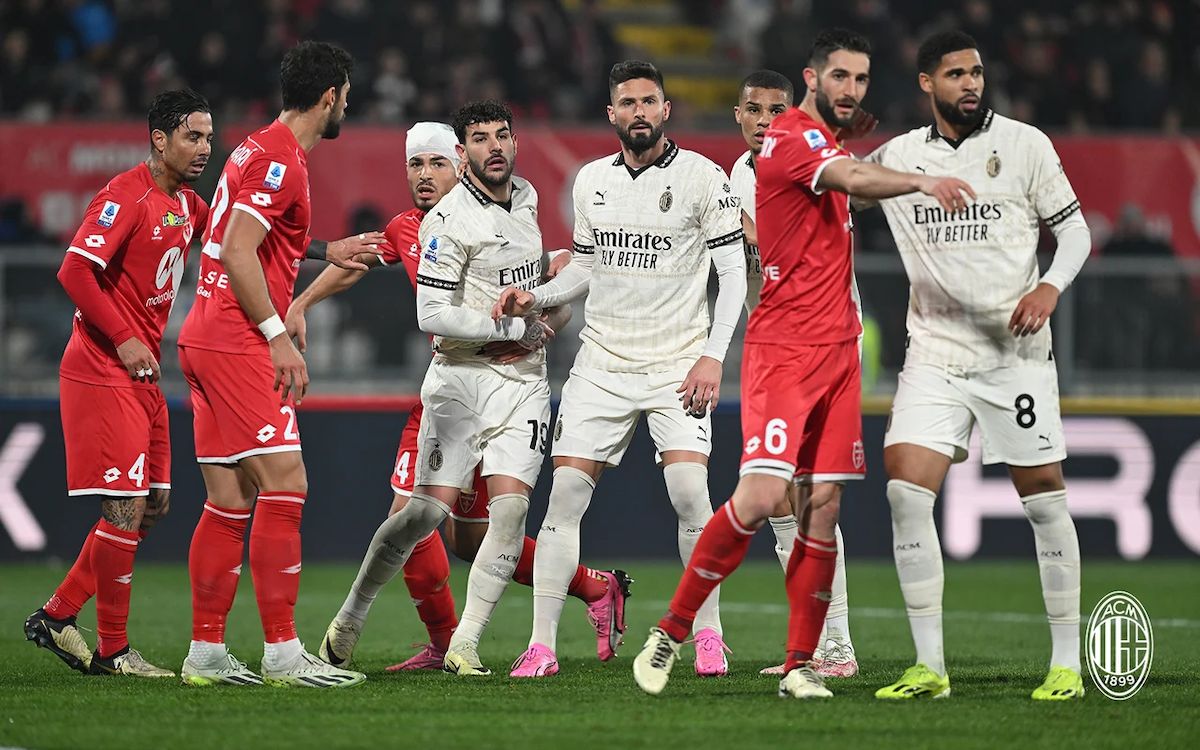
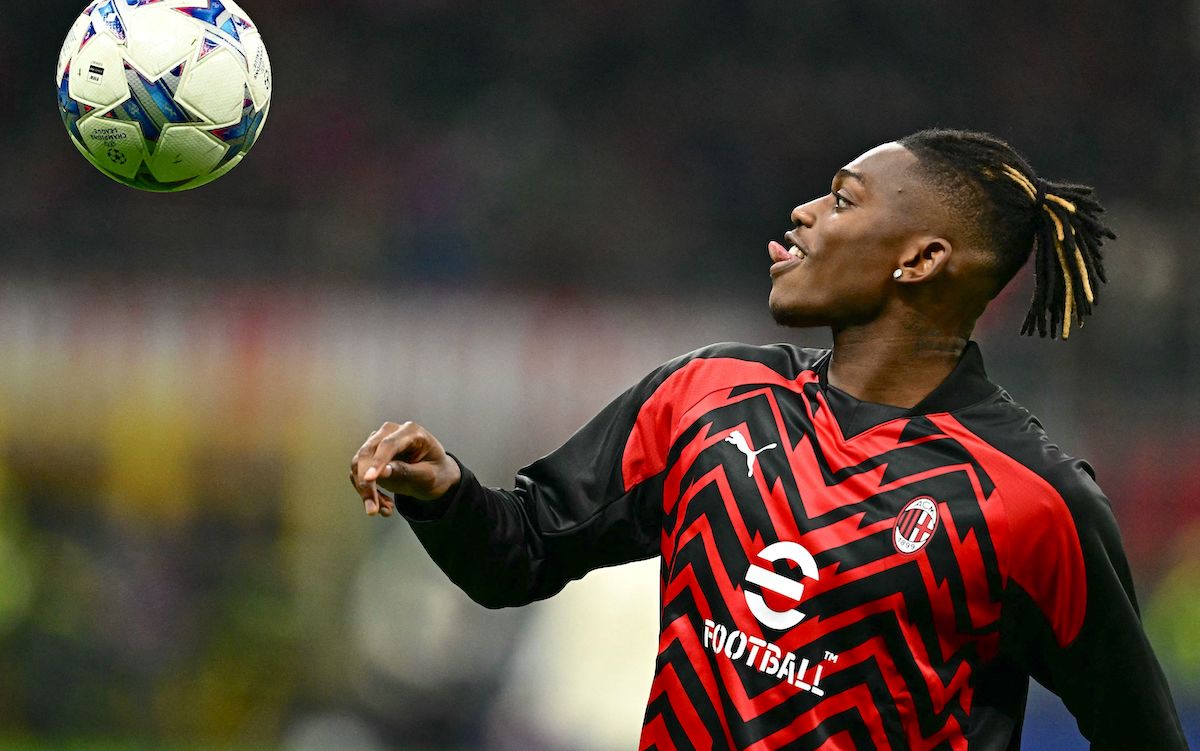

For no reason Pioli broke our best weapon – left side , for some reason he supressed Theo,there is no more Theo joining attack often as before,no more Theo going through midfield as before,its not even the same leao anymore,he fcked the system completely, he cut our 4231 which would be perfect with pulisic as an AM,he uses RLC as an AM based on 1 good game ge had vs PSG,everything after that was flop from that guy playing attcking midfielder